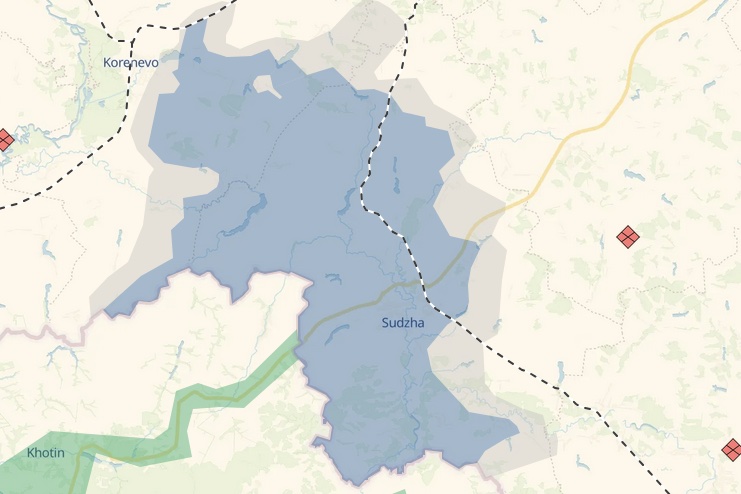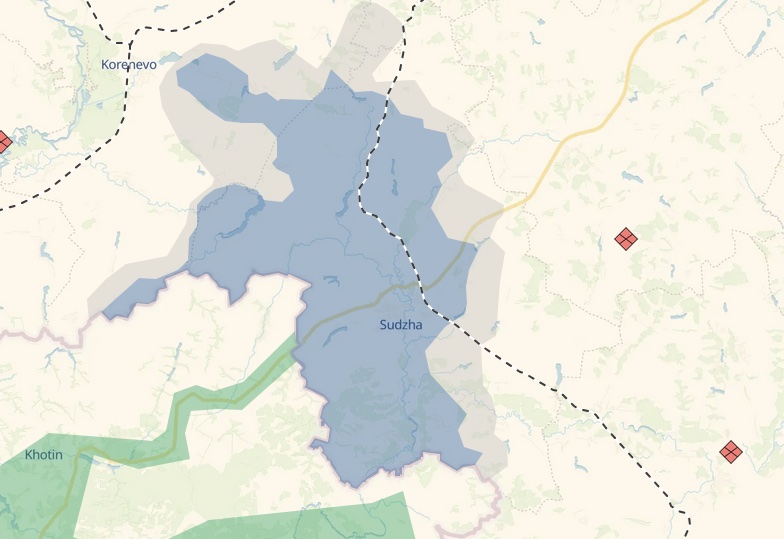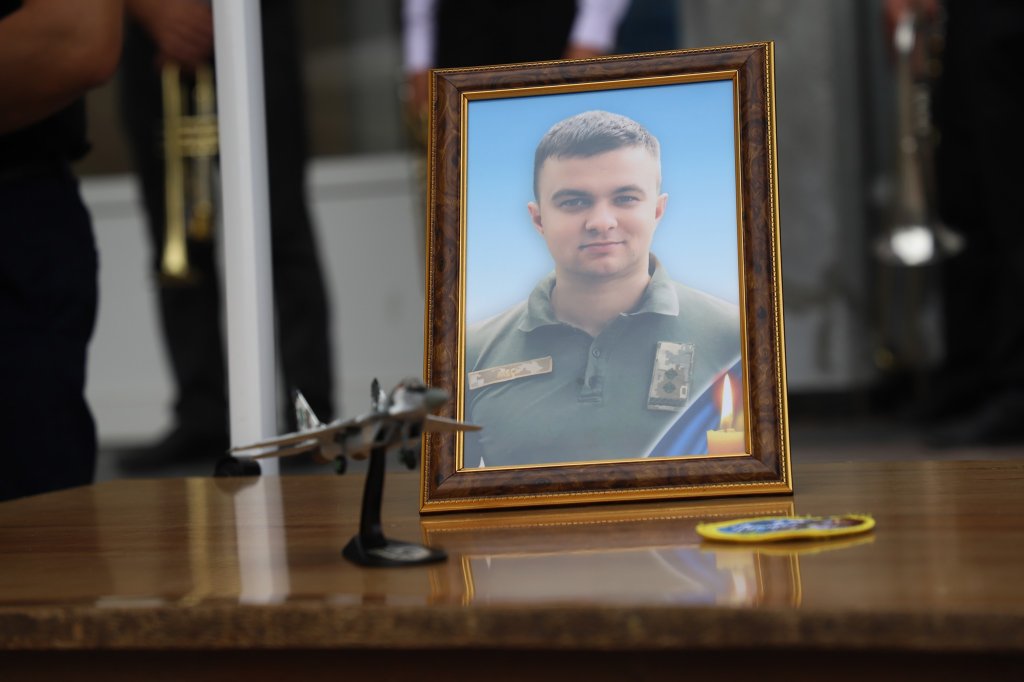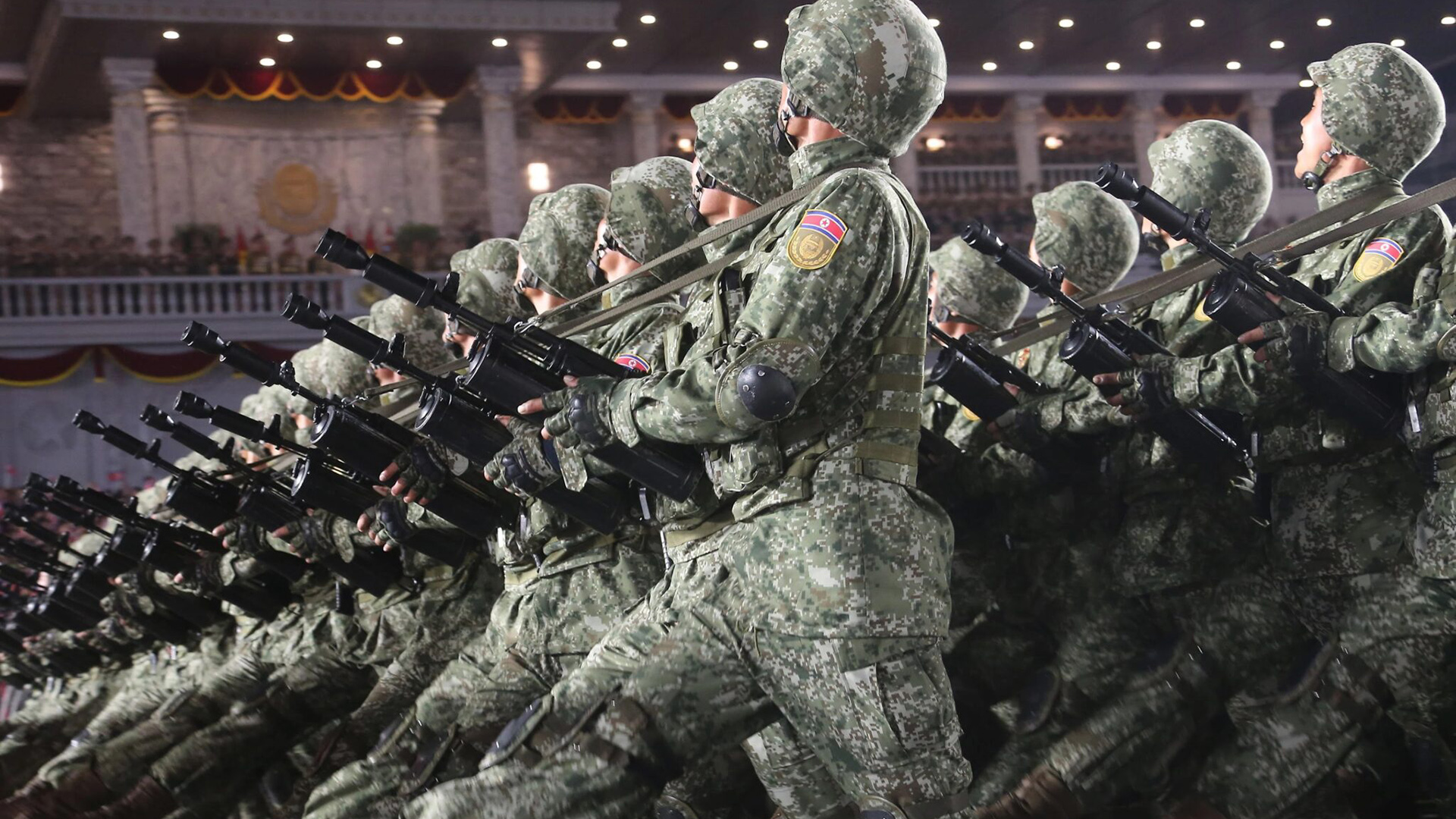There are now nearly 11,000 North Korean infantry troops training in eastern Russia to fight in Ukraine, the head of the Ukrainian Defense Intelligence Directorate (GUR) told The War Zone Thursday afternoon.
“They will be ready [to fight in Ukraine] on Nov. 1,” Lt. Gen. Kyrylo Budanov told TWZ.
The North Korean troops will be using Russian equipment and ammunition, said Budanov. The first cadre of 2,600 soldiers will go to Kursk, where Ukraine has established a heavily fought-over foothold (more on that later). It is unclear where the remaining North Korean troops will go, he added.
“We don’t have the full picture right now,” said Budanov.
Pyongyang’s forces, as we previously noted, have already been killed in Ukraine.

Budanov’s comments came hours after Ukrainian President Volodymyr Zelensky told reporters in Brussels that there are about 10,000 North Korean troops preparing to fight his country on behalf of Russia.
Zelensky warned that a third nation wading into the hostilities would turn the conflict into a “world war,” The Associated Press reported. The Ukrainian leader did not go into further details.
A day earlier, U.S. Deputy Secretary of State Kurt Campbell said in Seoul that Washington and its allies are alarmed by North Korea’s military support for Russia’s war in Ukraine but couldn’t confirm Ukrainian claims that North Korean soldiers were sent to fight for Moscow.
On Tuesday, Ukrainian media reported that about 3,000 troops were forming part of the “Special Buryat Battalion,” organized within the 11th Separate Airborne Assault Brigade of the Russian Armed Forces to fight in Ukraine.”
As we previously reported, Russian President Vladimir Putin submitted a draft law to the Russian State Duma on Monday seeking ratification of a strategic partnership between Moscow and Pyongyang, hammered in June. It calls for each side to provide military assistance to each other in the event of war.
In another sign of the burgeoning relationship between Moscow and Pyongyang, a report emerged on Thursday claiming that Russian troops are training to use North Korean self-propelled artillery.
The Ukrainian-aligned ATESH group claimed on Telegram that a Russian soldier who is part of the organization said the training is underway at the Higher Artillery Command School in Saratov, about 300 miles east of Ukraine. ATESH did not specify what variant of self-propelled artillery North Korea provided.
While The War Zone cannot independently verify this, we have written frequently about how North Korea is supporting Russia, including supplying ballistic missiles, artillery ammunition, and now, apparently, troops.
The Pentagon is looking into reports about North Korean troops fighting on behalf of Russia, but could not confirm them, Air Force Maj. Gen. Pat Ryder told The War Zone during a press conference Thursday afternoon.
“If true, that would demonstrate an increase in the cooperation between Russia and North Korea, and I think that would also demonstrate the dire situation [Russia] finds itself in, in terms of its forces on the battlefield,” said Ryder. “As you heard us recently say, the casualties that Russia is experiencing on the front lines are extremely significant, upward of 600,000 killed or wounded, and so it just demonstrates the desperation in terms of identifying additional forces for their military. It’s something that will continue to keep a close eye on.”
By deploying troops to Ukraine, North Korea may lead South Korea’s Yoon Suk Yeol government to rethink its policy of not providing direct military support to Ukraine, a U.S. expert said Thursday.
According to South Korea’s Yonhap News Agency, Victor Cha, Korea Chair at the Center for Strategic and International Studies, made the remarks following media reports that the Russian military is organizing the aforementioned special battalion of North Korean personnel amid manpower shortages.
“I would imagine, it would make President Yoon very upset, and who knows what he’s going to do if he’s really upset?” Cha said at a forum co-hosted by the Asan Institute for Policy Studies and the Brussels-based Center for Security, Diplomacy and Strategy.
Budanov’s statement is another indication of North Korea’s growing role in Russia’s all-out war on Ukraine and that it seems the size of the troop contingent that will participate has already grown larger than some had originally thought.
The Latest
On the battlefield, more than two months after Ukraine first launched its invasion of Russia’s Kursk region, one news organization is making a contested claim about the status of that operation.
Ukrainian troops have lost about half the territory captured, according to the Telegraph.
“A senior Russian commander from Chechnya said that an estimated 50,000 troops were pushing back Ukrainian forces, who either had to ‘flee or end up in the cauldron,’” the publication reported.
“Approximately half of the territory that was occupied by the enemy has already been liberated,” said Major General Apty Alaudinov.
Well-connected Russian and Ukrainian military bloggers have been reporting since Saturday that Moscow’s troops have punched through sectors of Ukraine’s front lines in Kursk, the publication noted.
Col.-Gen. Oleksandr Syrskyi, commander of Ukraine’s Armed Forces, last week confirmed that 50,000 Russians were fighting in Kursk, according to the Ukrainian Suspline news outlet. He stressed, however, that such actions led to the weakening of Russian groups in other areas, in particular in the Zaporizhzhia, Kherson regions and the Kramatorsk direction.
“The situation in the Kursk region remains difficult, but under control,” the Ukrainian DeepState open-source intelligence group said on Telegram last week. “It was a difficult and tense night, the Defense Forces of Ukraine are indeed carrying out stabilization actions, but it has not yet been possible to regain control over everything that was lost.”
Russians have “suffered considerable losses during the assault, so it will be difficult for them to gain a foothold,” DeepState added. “The worst is now, probably, in Lyubimovka, but we have to wait for the end of the new round of maneuver warfare.”
Ryder on Thursday pushed back on the assessment that Russia has recaptured about half the territory it lost in Kursk.
“Based on the information I have, that is not accurate,” he told The War Zone. “There has been a small amount of territory retaken by the Russians in Kursk, but at this stage, nothing that we would consider significant.”
DeepState’a interactive battle map shows that Ukraine has lost territory in Kursk in the past few weeks, mostly in the northwestern sector of its salient. However, it does not appear to be as much as The Telegraph asserted.


Some Russian milbloggers meanwhile have reported a slowdown in the effort to repel Ukrainian forces.
Zelensky told Donald Trump during their meeting last month that Ukraine needs to be part of NATO, or it would pursue nuclear capabilities to protect itself. He made those comments Thursday during a press conference in Brussels, after presenting his “Victory Plan” to European Union leaders.
“Either Ukraine will have nuclear weapons, which will serve as protection, or it must be part of some kind of alliance,” he said he told the former U.S. president and current Republican presidential nominee, according to the Kyiv Independent. “Apart from NATO, we do not know of such an effective alliance.”
“I believe Trump heard me and said that it was a fair argument,” he added.
Zelensky also invoked the Budapest Memorandum, in which Ukraine agreed in 1994 to give up its nuclear arsenal in exchange for security guarantees from Russia, the U.S., and the U.K., the publication noted.
“The agreement resulted in Ukraine losing its nuclear shield, Zelensky argued, while other powers that have maintained their nuclear arsenal have not suffered from a full-scale war,” according to the Kyiv Independent. Zelensky emphasized that he would choose NATO membership over pursuing nuclear weapons.
Ukraine does not have any nuclear weapons and officials there are pushing back on a claim by the German Bild news outlet that Kyiv is on the verge of producing some.
“We have the material, we have the knowledge. If the order is given, we will only need a few weeks to have the first bomb,” an official reportedly said at the time, Bild stated. The publication did not state when exactly the “closed meeting” took place.
Presidential advisor Dmytro Lytvyn denied that claim and compared the statements by reporter Julian Röpcke to Russian propaganda, accusing him of spreading misinformation, according to the Kyiv Post.
Zelensky unveiled that “Victory Plan” to his nation’s parliament on Wednesday. That introduction came after Zelensky toured Europe but failed to drum up international support for the effort.
The plan outlined by Zelensky consists of five key points, according to BBC:
- Inviting Ukraine to join the NATO military alliance
- Strengthening of Ukrainian defense against Russian forces, including getting permission from allies to use their long-range weapons on Russian territory, and the continuation of Ukraine’s military operations on Russian territory to avoid the creation of the “buffer zones” in Ukraine
- Containing Russia via a non-nuclear strategic deterrent package deployed on Ukrainian soil
- Joint protection by the U.S. and the EU of Ukraine’s critical natural resources and joint use of their economic potential
- Replacing some US troops stationed across Europe with Ukrainian soldiers in the post-war period.
Three “addendums” remain secret and will only be shared with Ukraine’s partners, Zelensky said.
European Parliament President Roberta Metsola lauded Zelensky’s plan, calling it “a peace with integrity, a peace with justice, peace with dignity.”
Ukraine will become a member of NATO in the future, according to the alliance’s new Secretary General Mark Rutte.
“In the future, NATO will have as a 32 or 34th member,” he told reporters Thursday in Brussels. “We will have Ukraine. At the moment, it seems that it will be Ukraine as number 33 but maybe somebody else pops in front of them, but Ukraine will be a member of NATO in the future. That’s how we decided in Washington.”
Rutte did not offer any specifics about when that might happen.
Ukrainian authorities “ordered the evacuation of a key city and three other localities in northeastern Kharkiv region on Tuesday as Russian forces press closer and officials face difficulties in providing services through the winter,” Reuters reported. “The order applied to Kupiansk, a rail hub lying astride the Oskil River, as well as the town of Borova, further south, near the city of Izium, another major logistics center.”
Ukrainian officials bristled at the news the U.S. is sending Israel one of its seven prized Terminal High Altitude Area Defense (THAAD) batteries to protect against another Iranian ballistic missile barrage.
Officials in Kyiv complain of a double standard because a THAAD battery has not been assigned to protect Ukraine, Politico noted.
“The reason why the U.S. acts boldly in Israel and cautiously in Ukraine is clear: Russia is armed with nuclear weapons and Iran isn’t,” a source told the publication.
“The tough answer that Ukrainians may not like to hear but is unfortunately true is that we can take the risk of shooting down Iranian missiles over Israel without triggering direct war with Tehran that could lead to nuclear war,” a senior U.S. Senate aide who works on Ukraine policy told Politico. “There’s a lot more risk in trying that with Russia.”
The announcement of its pending delivery comes ahead of an expected Israeli retaliation for Tehran’s massive missile barrage earlier this month.
The Pentagon on Wednesday announced a new $425 million aid package to Ukraine. The 67th tranche of Presidential Drawdown Authority (PDA) assistance provided by the Biden administration, it includes additional air defense capabilities; air-to-ground weapons; munitions for rocket systems and artillery; armored vehicles; and anti-tank weapons.
The capabilities in this announcement include:
- Additional munitions for National Advanced Surface-to-Air Missile Systems (NASAMS):
- RIM-7 missiles and support for air defense;
- Stinger anti-aircraft missiles;
- Ammunition for High Mobility Artillery Rocket Systems (HIMARS);
- Air-to-ground munitions;
- 155mm and 105mm artillery ammunition;
- Tube-launched, Optically tracked, Wire-guided (TOW) missiles;
- Javelin and AT-4 anti-armor systems;
- High Mobility Multipurpose Wheeled Vehicles (HMMWVs);
- Small arms and ammunition;
- Grenades, thermals, and training equipment;
- Demolitions equipment and munitions; and
- Spare parts, ancillary equipment, services, training, and transportation.

Norway will soon deliver half of the 12 F-16 fighters it is expected to provide Ukraine, according to Ukrainian Defense Minister Rustem Umerov.
To date, Belgium, Denmark, the Netherlands, and Norway have collectively pledged some 85 F-16AM/BM jets to Ukraine and Greece may be moving to commit 32 additional F-16C/D variants.
The U.S. “is refocusing its training of Ukrainian F-16 pilots on younger cadets rather than experienced air force members,” The Wall Street Journal reported today. It is a decision” that could extend by many months the timeline for when Kyiv will have a full squadron of the Western-built aircraft ready for the battlefield.”
The new direction” is the result of the lack of experienced Ukrainian pilots with requisite English-language abilities who can be spared from the battlefield,” the publication reported, citing U.S. officials. “Some officials also said that the U.S. believes younger cadets would be more open to Western-style instruction.
The training course has been a subject of debate recently, particularly after an August mishap that killed Oleksiy Mes, a former MiG-29 squadron commander with the callsign “Moonfish” who had recently graduated from the program. In addition to the loss of Mes, that incident destroyed one of Ukraine’s few F-16s. The mishap is still under investigation.

Ukraine showed off one of its IRIS-T SLM surface-to-air missile systems, among several donated by Germany.
Speaking of Germany, opposition leader Freidrich Merz of the center-right Christian Democratic Union party said he would give Russia a 24-hour ultimatum to stop bombing Ukrainian civilian infrastructure or he would approve providing Taurus KEPD 350 cruise missiles to Ukraine should he become chancellor. That’s according to Bild war correspondent Julian Röpcke.
The stance is counter to that held by current Chancellor Olaf Scholz as well as the German parliament, which in January overwhelmingly voted down a non-binding measure on delivering those weapons to Ukraine.
The weapon, which first entered German service in 2005, has a stated range of around 300 miles.
The U.S. imposed sanctions on three entities and one person involved in the development and production of Russia’s Garpiya series of long-range attack drones, the State Department announced Thursday morning.
The Garpiya is “designed and produced in the People’s Republic of China (PRC) in collaboration with Russian defense firms” and has been used “to destroy critical infrastructure and has resulted in mass casualties,” the department said in a release.
These are the first U.S. sanctions imposed on PRC entities directly developing and producing complete weapons systems in partnership with Russian firms, the State Department noted.
“Today’s action is part of our continued effort to disrupt attempts by PRC-based and Russia-based entities and individuals to support Russia’s acquisition of advanced weapons technology and components,” according to the release. “We will continue to impose costs on those who provide support to Russia’s military-industrial base.”
You can read more about who was sanctioned in this Treasury Department release.
A Russian hacking group has accelerated cyber attacks against Ukraine and Poland to suck up data “of strategic interest,” according to a new report by the Cisco-Talos cyber security firm.
The group, UAT-5647, also known as RomCom, “has long been considered a multi-motivational threat actor performing both ransomware and espionage-oriented attacks,” the report states. “However, UAT-5647 has accelerated their attacks in recent months with a clear focus on establishing long–term access for exfiltrating data of strategic interest to them. Our assessment, in line with recent reporting from CERT-UA and Palo Alto Networks, indicates that the threat actor is aggressively expanding their tooling and infrastructure to support a wide variety of malware components authored in diverse languages and platforms such as GoLang, C++, The RUST and LUA.”
The cyber attack on high-profile Ukrainian entities is likely part of a two-pronged effort to steal data and place malware on these systems in order to disrupt and seek financial gain from the targets, the report concluded.
“It is also likely that Polish entities were also targeted, based on the keyboard language checks performed by the malware.
In another cyber attack Russian hackers used Telegram to target the devices of Ukraine’s draft-aged men with the MeduzaStealer malware, Ukraine’s government computer emergency team stated in a separate report.
MeduzaStealer “was previously used by Russia-linked threat actors to obtain login credentials, computer information, browsing history and data from password managers,” according to The Record. “Last year, a threat actor known as UAC-0050 deployed the malware against targets in Ukraine and Poland.”
Given the mounting losses on the battlefield and the need for new troops, a Ukrainian officer called for the recruitment age to be lowered from the present 25 years of age
“It is necessary to lower the mobilization age to 21 so that we have young motivated soldiers in the army, Col. Ihor Obolenskyi commander of the 13th Brigade of the National Guard, said on national television, according to the Ukrainian Unian media outlet. “The more our youth can feel what war is now, the easier it will be for us in the future. Hard times give birth to strong people.”
Radio Free Europe/Radio Liberty reporter Mark Krutow compiled an interesting Twitter threat about his geolocation of Russian Pantsir air defense systems. By examining the locations, he noticed Russia had created a ring pattern of those systems around Moscow since 2022.
He also “noticed a few ‘gaps’ in the ring, one of which was in the northwest area,” Krutow explained.
Back in 2022, we wrote about how a Turkish Ada class corvette eventually bound for Ukraine was launched at the RMK Marine shipyard in Istanbul Turkey during a ceremony attended by Olena Zelenksa, wife of the Ukrainian president.
The corvette – which Zelensky in 2021 named Hetman Ivan Mazepa in honor of Ivan Stepanovych Mazepa, a Ukrainian Cossack military leader – was expected to be delivered sometime this year. New video shows it conducting work-up operations off the Turkish coast. The ship has reportedly completed torpedo firing drills, and flight operations with Turkish Navy SH-60 Seahawk helicopters.
The deputy head of a Russian special operations unit and officer of the Main Intelligence Directorate (GRU) was assassinated in the Moscow region Wednesday, according to the Moscow Times.
An unknown suspect fired eight shots at Nikita Klenkov from the window of a Mitsubishi Outlander, according to the Russian Baza news agency.
Klenkov has previously served in Ukraine. The motive for his killing in not yet known.
CNN was given unprecedented access to a GUR drone strike against a Russian ammunition depot. The segment shows the dangerous nature of the strike, which has to be carried out quickly before the Russians can spot it. It also highlights how Ukraine uses tinfoil-wrapped decoy drones to draw attention from the real ones.
France has produced its first kamikaze drones and will deliver them to its troops and Ukraine “in the coming weeks,” French Defense Minister Sébastien Lecornu announced on Twitter.
Known as the Colibri loitering ammunition, it has “been under development by France’s Delair and KNDS [companies] since last year,” the Kyiv Independent reported. “The Calibri project was launched to develop a system with a radius of 5 kilometers at a cost of less than 20,000 euros ($22,000) per unit.”
The drones should be delivered to Ukraine in between this year and next, according to the publication, adding that Delair has previously provided Ukraine with 100 UX-11 reconnaissance drones and 50 larger DT-26 drones.
Earlier this year, Lecornu said the French military would order 2,000 kamikaze drones, with the first 100 to be sent to Ukraine.
Cluster munitions from an M142 High Mobility Artillery Rocket Systems, or HIMARS struck a Russian training ground on the southern front. The following video shows the submunitions striking an area where the troops were gathered.
At a very close range, a Ukrainian tank is seen firing at a Russian armored personnel carrier. Though the two vehicles were just yards apart at the time, at least some Russian troops managed to scamper out.
A helicopter parts shop in St. Petersburg, Russia was destroyed by six ax-wielding masked men, the Russian Baza news agency reported Thursday on Telegram.
“On the night of October 14, six masked men climbed onto the plant’s premises on Kingiseppskoe Highway,” according to Baza. “They were armed with axes and hammers. According to workers in the shop at the time, the unknown individuals began to smash the machines using improvised means. At the same time, one of the criminals ran up to the workers and forced them to give him their phones.”
One theory that emerged is that instead of this being a Ukrainian-connected sabotage operation, it could have been carried out by the company’s competitors, Baza posited.
Russia claims to have recovered another Ukrainian jet-powered drone. It has no name and there is no indication by the Ukrainian Powerful Informant Telegram channel that posted the images when or where it was recovered Among the components visible on the drone is a U.S.-made CubePilot Orange flight controller, which you can see below in the picture on the right.
Heavy bomber drones launched by Ukraine reportedly destroyed a Russian 2S4 Tyupan 240mm self-propelled heavy mortar. They also struck a TOS-1 220mm multiple launch rocket system (MLRS) vehicle, with unknown results.
Though it does not get as much attention, there is still a fight going on in the southern front. The following video shows a Ukrainian first-person view (FPV) drone destroying a Russian boat.
The Ukrainian-made drone-launched revolving drum seen in the following video can hold up to five warheads, each released as the device spins around.
The Ukrainians aren’t the only ones improvising in this war. Russia too is coming up with ad-hoc solutions to battlefield problems.
Fire missions in the Orekhov direction of the Zaporizhia region are carried out using a robotic ATGM. It was designed and constructed by one of the servicemen of the Dnepr group of forces, the Russian Defense Ministry (MoD) said on Telegram. The soldier was an engineer by education.
“We found a man, a fighter, who designed and created a model from scratch,” the MoD said. “‘First on a computer, and then brought it to life. Everything from scratch to the final result,’ said the ATGM battery commander with the call sign ‘Tourist.'”
The Russian Two Majors Telegram channel released video showing a tracked uncrewed ground vehicle (UGV) sporting a 300×7.62mm machine gun.
Russia continues to increase the use of FPV drones with fiber optic wires connecting them to their controllers instead of a radio link. This makes them impervious to jamming and allows them to navigate at very low level without degrading the operators feed. Although the very long trailing wire is a major drawback.
To avoid being struck by Ukrainian drones, Russia has turned to dummies to distract operators and get them to waste munitions.
However, not all Russian improvisions are working well. in the case of this Kapyushon K-8 anti-drone electronic warfare system, the troops receiving the equipment expressed displeasure with the workmanship.
“Question, is this a beer can?” one Russian soldier wondered about one of the system’s antennae. “…Don’t send this to us.”
The EW system wasn’t the only piece of equipment Russian troops griped about. The video below shows them complaining about the welding quality in the new body of a Bukhanka van produced by the UAZ company, noting that this vehicle costs 1.5 million rubles (over $15,000).
Special capes designed to help Russian troops hide from the thermal cameras on Ukrainian drones do not appear to be having the intended effect. A soldier scurrying through the forest tried to hide in one, only to have the drone find and strike him.
And finally, photos of warplanes making close passes never get old. Such is the case in this photo of a Ukrainian Air Force Su-24 Fencer swing-wing attack jet buzzing a group of farmers in the central part of the country.
That’s it for now.
Contact the author: howard@thewarzone.com
